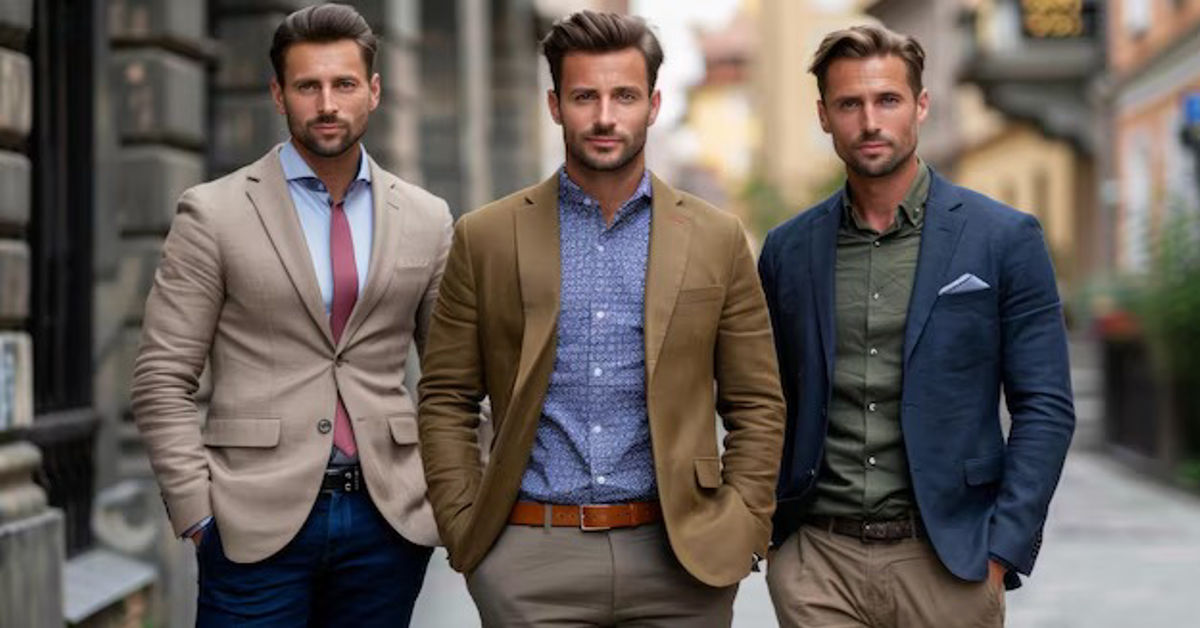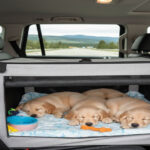Fashion in the workplace has evolved drastically over the past few decades. Gone are the days when every man was expected to wear a stiff suit and tie to the office. Today, the concept of business casual men represents a balance between professionalism and comfort. This dress code has become the standard in many industries, allowing employees to present themselves with style while maintaining an approachable and modern appearance. Understanding what falls under business casual men attire can sometimes be confusing because different companies interpret it differently. The key lies in blending formal and informal elements to create a polished yet relaxed look. This article will explore everything you need to know about business casual for men, including outfit essentials, do’s and don’ts, seasonal dressing, footwear, accessories, and styling tips. Whether you are preparing for a job interview, office environment, or business meeting, mastering this dress code ensures you look confident and professional.
What Does Business Casual Mean for Men?
The term business casual is often misunderstood because it exists somewhere between traditional suits and everyday casual wear. For men, it typically involves slacks, chinos, or dress pants paired with a button-down shirt, polo, or sweater. Jackets and blazers are optional but can elevate the look when needed. Unlike a strict corporate dress code, business casual allows for flexibility and personal style. For instance, ties are not usually required, but clean and well-fitted clothing remains essential. Shoes are an important part of this style; loafers, brogues, or dress shoes are preferred, while sneakers are generally avoided unless specifically allowed by company policy. The goal is to maintain professionalism without appearing overly formal. Understanding the culture of your workplace is crucial because business casual in a law firm may look different from business casual in a creative agency. When done correctly, this dress code reflects confidence, attention to detail, and adaptability.
Essential Clothing Items for Business Casual Men
Every wardrobe should have a set of versatile pieces that can be mixed and matched to create multiple outfits suitable for a business casual setting. Dress shirts in neutral colors like white, light blue, and gray form the foundation, while patterned shirts like checks or stripes add variety. Chinos and tailored trousers are must-haves because they provide comfort without compromising professionalism. A well-fitted blazer is another essential that instantly elevates an outfit. For more relaxed workplaces, a polo shirt or fine-knit sweater works perfectly. Footwear should complement the outfit, so leather loafers or oxfords are recommended. Belts, preferably leather and matching the shoes, complete the look. Investing in high-quality fabrics ensures durability and a refined appearance. Building a capsule wardrobe around these staples allows you to dress effortlessly while staying within the boundaries of business casual.
Key Wardrobe Staples for Business Casual Men
| Clothing Item | Recommended Options | Why It Matters |
| Shirts | Button-down, polo, dress shirts | Creates a polished, professional base |
| Pants | Chinos, dress trousers | Balance of comfort and professionalism |
| Outerwear | Blazers, sport coats | Adds structure and versatility |
| Footwear | Loafers, oxfords, brogues | Reflects professionalism without being too formal |
| Accessories | Leather belt, wristwatch | Enhances appearance with subtle details |
A carefully chosen wardrobe ensures consistency, versatility, and effortless style. These essentials can be rotated across different occasions, saving both time and effort while keeping your look sharp.
The Do’s and Don’ts of Business Casual Men Style
One of the biggest mistakes men make with business casual attire is leaning too far toward either extreme. Dressing too formally defeats the purpose of the dress code, while dressing too casually can appear unprofessional. Do focus on fit, because even the most expensive clothing looks unimpressive if poorly tailored. Do incorporate neutral and muted tones that are easy to pair, while occasionally adding a pop of color to express personality. Don’t wear overly casual items like ripped jeans, graphic T-shirts, or sneakers unless explicitly allowed. Don’t over-accessorize; minimalism is key in business casual dressing. Grooming also plays a vital role, so make sure hair, beard, and nails are well-kept. This balance ensures you appear approachable while still commanding respect in a professional environment. Ultimately the success of business casual for men lies in projecting confidence and competence through subtle details and a clean overall look.
Seasonal Business Casual Outfits for Men
Adapting business casual attire to different seasons is essential for both comfort and style. In summer, lightweight fabrics such as cotton and linen are ideal, paired with breathable shirts and chinos. Neutral shades like beige, sky blue, and white help create a fresh appearance. During winter, layering becomes important. Wool trousers, sweaters, and blazers provide warmth without compromising professionalism. A dark overcoat or trench coat works perfectly for commuting to work in colder climates. Spring and autumn allow for more flexibility, with transitional pieces like cardigans, light jackets, and earth-tone trousers. Shoes should also adapt to the seasons, with loafers being great for warmer months and leather boots suitable for winter. Seasonal adjustments ensure you remain comfortable and stylish year-round while respecting workplace standards. A man who masters seasonal business casual dressing demonstrates adaptability, which is a highly valued trait in modern workplaces.
Seasonal Business Casual Guide for Men
| Season | Recommended Clothing | Suggested Colors | Footwear Choices |
| Summer | Linen shirts, chinos | White, beige, sky blue | Loafers, light leather shoes |
| Autumn | Cardigans, jackets | Earth tones, olive, navy | Brogues, derby shoes |
| Winter | Wool trousers, sweaters, blazers | Charcoal, black, deep blue | Leather boots, oxfords |
| Spring | Light blazers, cotton shirts | Pastel colors, gray, khaki | Loafers, monk straps |
Dressing appropriately for each season not only boosts comfort but also shows attention to detail, an attribute that enhances professional image.
Footwear Choices in Business Casual Men Outfits
Shoes play a vital role in business casual attire because they complete the look and influence first impressions. While formal dress shoes are too rigid, sneakers are often too informal. The ideal middle ground includes loafers, derby shoes, monk straps, and brogues. These styles pair well with trousers or chinos, creating a refined yet approachable appearance. The color of footwear also matters; black shoes offer a traditional look, while brown and tan shades provide versatility and pair well with lighter outfits. For a creative workplace, suede shoes can be a stylish option, while leather boots work perfectly in colder weather. Footwear maintenance should not be overlooked, as clean and polished shoes reflect professionalism and attention to detail. Since shoes often draw attention, investing in high-quality, comfortable pairs ensures durability and makes a strong style statement in the workplace.
Accessories to Elevate Business Casual Men Outfits
Accessories should be subtle yet effective in enhancing business casual outfits. A leather belt, preferably matching the shoes, ensures a cohesive look. A wristwatch is another timeless accessory that conveys reliability and taste. For cooler seasons, scarves in neutral shades can add sophistication while maintaining practicality. Pocket squares, although not mandatory, can add flair when paired with a blazer. Bags also contribute to the business casual image; leather messenger bags or sleek briefcases are better choices than casual backpacks. Glasses, when chosen thoughtfully, can even serve as a stylish accessory that complements the overall outfit. The goal with accessories is not to overdo it but to add finishing touches that elevate the look. Subtle, high-quality details often leave a lasting impression, showing that you have put effort into curating a professional and stylish appearance suitable for the workplace.
Common Mistakes Men Make in Business Casual Dressing
Many men misinterpret business casual as an excuse to dress down too much. Wearing jeans with holes, oversized T-shirts, or sneakers can appear unprofessional in most offices. Another common mistake is ignoring fit; baggy trousers and untucked shirts create a sloppy impression. Some men also stick to a single color palette, making their outfits look repetitive. Mixing textures and subtle patterns helps maintain variety while staying within professional boundaries. Neglecting shoe care or wearing mismatched accessories can undo an otherwise polished look. Another issue is overdressing, where a man may wear a full suit without a tie, which may come across as confused rather than stylish. Striking the right balance requires understanding workplace culture, personal body type, and the context of each event. Avoiding these mistakes ensures that you stand out for the right reasons in professional environments.
Building a Capsule Wardrobe for Business Casual Men
A capsule wardrobe is a collection of versatile clothing items that can be mixed and matched to create multiple outfits. For business casual men, this approach simplifies dressing while ensuring consistency and style. Start with neutral trousers like navy chinos, gray dress pants, and beige khakis. Add a few classic shirts, including white, light blue and striped options. Layer with a navy blazer and a charcoal cardigan for versatility. Footwear should include one pair of brown loafers and one pair of black dress shoes. Accessories such as belts, ties, and a leather bag complete the collection. The key benefit of a capsule wardrobe is efficiency; it saves time and eliminates the stress of daily outfit decisions. This strategy also promotes investment in quality rather than quantity, ensuring long-lasting pieces that maintain their shape and style over time.
Example Capsule Wardrobe for Business Casual Men
| Category | Items to Include | Color Suggestions |
| Trousers | Chinos, dress pants | Navy, beige, gray |
| Shirts | Button-down, striped, polo | White, light blue, checked |
| Outerwear | Blazer, cardigan | Navy, charcoal |
| Footwear | Loafers, dress shoes | Brown, black |
| Accessories | Belts, watch, leather bag | Neutral tones |
With just a few well-selected pieces, you can create dozens of different outfit combinations suitable for both office and client meetings.
Conclusion
Mastering the art of business casual men style is about finding the balance between professionalism and comfort. It requires an understanding of workplace culture, attention to fit, and investment in versatile clothing essentials. By incorporating seasonal adjustments, selecting the right footwear, and accessorizing thoughtfully, men can create a polished and confident image that suits both traditional and modern work environments. Avoiding common mistakes such as overdressing or dressing too casually ensures that your look remains sharp and appropriate. A carefully built capsule wardrobe can make dressing simple, efficient, and stylish, helping you project confidence every day. Ultimately, business casual is not about rigid rules but about making choices that reflect both professionalism and personality. Embracing this balance allows men to thrive in professional settings while enjoying the comfort of modern style.
FAQs on Business Casual Men
1. What is considered business casual for men in most workplaces?
Business casual typically includes chinos, dress pants, button-down shirts, polos, blazers, and loafers. Ties are optional, and sneakers or ripped jeans are usually not appropriate.
2. Can men wear jeans in business casual outfits?
It depends on the company. In some creative or relaxed environments, dark, well-fitted jeans without rips may be acceptable. However, many traditional workplaces avoid jeans under business casual.
3. Are sneakers allowed in business casual attire for men?
Generally, sneakers are not considered business casual unless they are minimal, clean, and explicitly allowed by company policy. Leather shoes such as loafers or derby shoes are preferred.
4. How can men adapt business casual outfits for summer?
Opt for lightweight fabrics like cotton and linen, lighter colors such as beige or white, and breathable shoes like loafers. Avoid heavy fabrics that trap heat.
5. What accessories work best with business casual attire for men?
Subtle accessories such as leather belts, classic wristwatches, messenger bags, and simple pocket squares elevate the outfit without being distracting.







